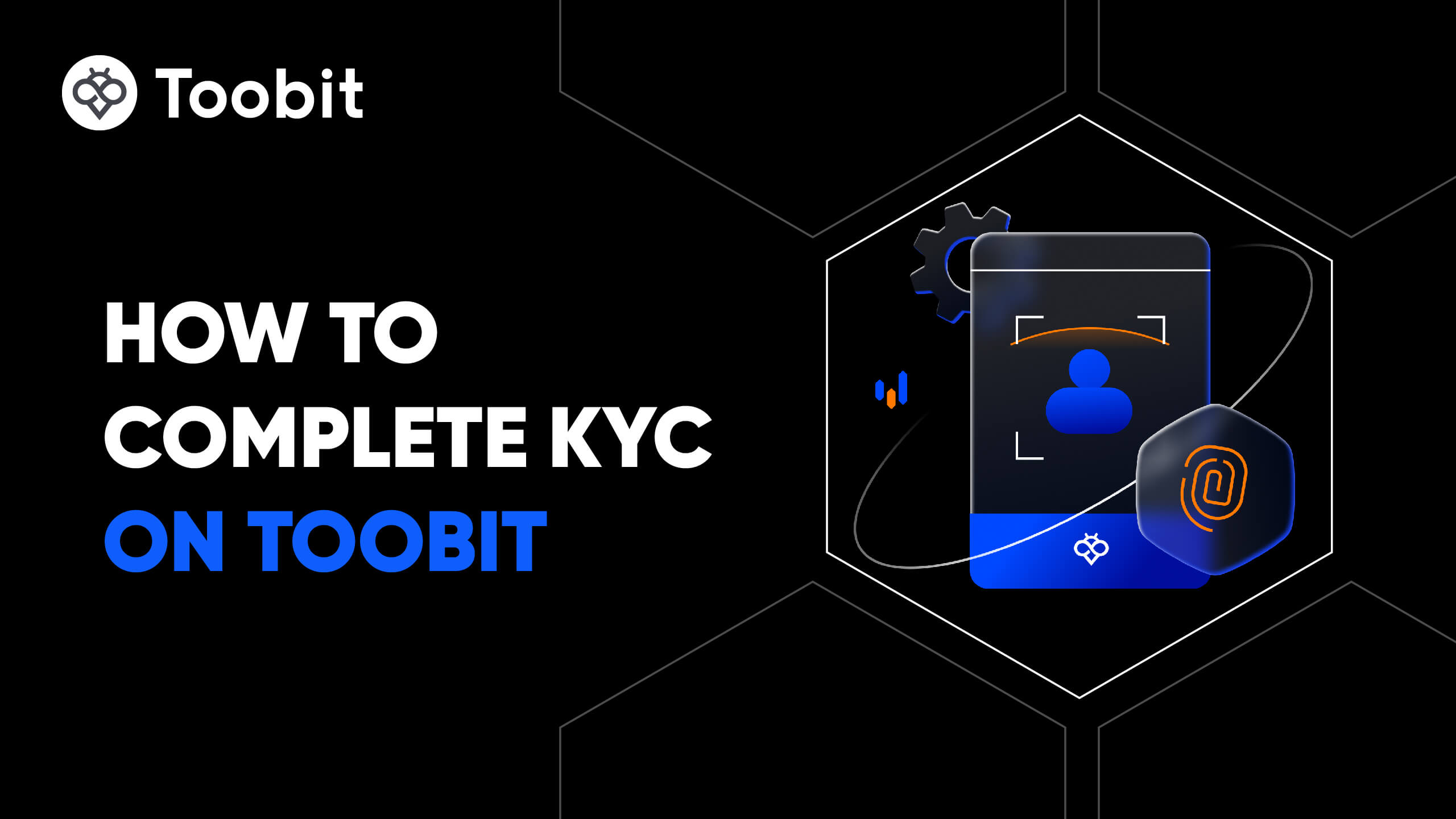Aptos price
APTAptos market info
Live Aptos price today in USD
How much is 1 APT worth in ?
About Aptos(APT)
Aptos price history
Why does the price of Aptos always fluctuate?
What factors affect the performance of Aptos prices?
Global Aptos prices
How to buy Aptos
Create your free Toobit account
Sign up on Toobit with your email address/mobile phone number and country of residence, and create a strong password to secure your account.
Verify your identity
Complete identity verification by submitting your personal details and a valid photo ID.
Add a payment method and buy Aptos (APT)
Add a credit/debit card or bank account after verifying your Toobit account. Use multiple payment options to buy Aptos on Toobit.
Trade APT perpetual futures
After signing up on Toobit and buying USDT or APT tokens, you can start trading derivatives, including APT futures and margin trading to increase your income.
Join APT copy trading with lead traders
After signing up on Toobit and successfully buying USDT or APT tokens, you can also start copy trading by following Lead Traders.
Where can I buy Aptos?
Buy crypto on the Toobit app
Sign up within minutes to purchase crypto via credit card or bank transfer.
Trade on Toobit
Deposit your cryptocurrencies to Toobit and enjoy high liquidity and low trading fees.
Video section — quick verification, quick trading

How to complete identification on Toobit and protect yourself from fraud
- 1.Log in to your Toobit account.
- 2.If you're new to Toobit, watch our tutorial on how to create an account.
- 3.Click on the profile icon in the upper right corner of the navigation bar, then tap on Identification page.
FAQ About Aptos (APT)
What is APT community ownership?
The Aptos network is designed to be owned, operated, and governed by its diverse community. The native APT coin grants holders direct voting power on critical protocol upgrades and on-chain governance proposals, ensuring a decentralized decision-making process. Furthermore, APT coin is utilized to secure the Layer 1 blockchain via its nominated Proof-of-Stake model, where stakers are rewarded for their participation.What is the APT vision?
The APT vision is to drive mainstream Web3 adoption by delivering a resilient, safe, and highly performant Layer 1 blockchain. Aptos aims to empower an ecosystem of DApps that solve real-world user problems. Its core principles—a flexible, modular architecture for frequent, seamless upgrades and a computationally scalable infrastructure—are designed to meet global demand without sacrificing security or disrupting users. This makes the Aptos ecosystem a foundation for next-generation financial services, social media, and gaming.How does Aptos work?
The Aptos Layer 1 blockchain achieves its high performance through three core innovations:- Block-STM parallel execution engine: Unlike most traditional blockchains that process transactions one by one, Aptos uses its Block-STM engine to execute multiple transactions simultaneously. This novel approach, which validates transactions after execution, is key to its theoretical peak throughput of over 160,000 transactions per second (TPS), significantly enhancing speed and scalability for the Aptos ecosystem.- Move programming language: Move, originally developed for the Diem project, is a smart contract language focused on security. Its system allows developers to define custom resources that cannot be duplicated or implicitly discarded, mitigating common smart contract vulnerabilities.- AptosBFT consensus: The network uses an evolved, custom-built Byzantine Fault Tolerant (BFT) consensus mechanism, currently in its Raptr iteration (deployed in 2025). This protocol intelligently separates the transaction ordering process from execution and automatically handles non-responsive validators, ensuring high consistency and extremely low latency.What are the potential use cases for Aptos?
Aptos's high transactional throughput, low latency (around 80ms block times in October 2025), and secure smart contracts written in Move make it suitable for a wide range of demanding use cases in the Aptos ecosystem:- Global payments and institutional DeFi: The high TPS is ideal for real-time payment systems and institutional-grade decentralized finance requiring minimal transaction fees and instant finality.- Web3 gaming & social media: Its parallel execution and low latency provide a seamless user experience necessary for massive, high-frequency gaming and social platforms.- Enterprise-grade applications: The network's modular architecture and focus on security and reliability appeal to enterprises building complex business logic on-chain.How does Aptos compare to Solana and Flow?
Aptos, Solana, and Flow all have layer-one platforms with their own unique capabilities and features. Aptos was developed by an experienced team in the blockchain industry. Aptos is built with specific features, such as parallel processing. This feature allows multiple transactions to run simultaneously with the goal of giving a blockchain unlimited scalability. Additionally, Aptos can handle 130,000 transactions per seconds (TPS), whereas Solana and Flow each have different capacities:- Solana has a low transaction fee and a Proof-of History consensus, and - Flow has a multi-node architectureAptos' smart contracts are written in the Move programming languages, which was designed for parallel processing. Solana, on the other hand, uses Rust, and Flow, Cadence. Aptos’s unique use of Move and its parallel execution engine are designed specifically to provide unlimited, predictable scalability for the Aptos ecosystem, directly competing with these established chains for DApp builders.What consensus mechanism does Aptos use?
Aptos utilizes its own unique Byzantine Fault-Tolerant (BFT) consensus algorithm, currently running on its latest iteration known as Raptr (or Baby Raptr in its initial production phase as of mid-2025). Raptr is an evolution of the HotStuff protocol, designed to maximize transaction throughput while achieving extremely low finality latency. This BFT mechanism ensures the network remains secure and operational even if a portion of validators becomes malicious or unresponsive.How is the Aptos network secured?
The Aptos network is secured by two integrated protocols:- Proof-of-Stake (PoS): Validators must stake APT coin to participate in consensus, aligning their economic incentives with the network's security.- AptosBFT (Raptr): This custom, BFT algorithm automatically manages validator rotations and on-chain state analysis. By achieving fault-tolerance, it guarantees the network operates normally and transactions are finalized quickly and correctly, even when faced with hostile or non-responsive validators.What factors are influencing the APT price?
The APT coin price is influenced by a dynamic combination of factors:Supply & Token Unlocks: The price is constantly affected by the gradual release of locked APT coin from the vesting schedule, which can increase supply pressure. Major unlocks, like those scheduled in October 2025, are closely watched by the market.- Ecosystem growth and partnerships: Significant real-world integrations, such as the large institutional and enterprise partnerships announced in late 2025, or the growth of the DeFi TVL (Total Value Locked) in the Aptos ecosystem, directly signal adoption and fuel demand.- Technological milestones: Successful deployment of upgrades (like the Raptr consensus) and advancements toward theoretical TPS ceilings enhance investor confidence in the Layer 1 blockchain's long-term viability.- Market sentiment: Overall trends in the broader cryptocurrency market and regulatory news related to centralized or decentralized exchanges often impact the APT coin price.How can traders analyze the price movement of APT coin?
Traders can analyze the price movement of APT coin by conducting technical analysis using chart patterns, support and resistance levels, moving averages, and other indicators. Fundamental analysis can also be used to assess the value proposition of APT coin and its potential for long-term growth.How does the broader cryptocurrency market impact the APT price?
As a major Layer 1 blockchain asset, the APT coin price is significantly influenced by the broader cryptocurrency market. General market trends, sentiment, and investor behavior often spill over into individual altcoins. A bullish market tends to lift the APT coin price, while bearish conditions, market-wide FUD (Fear, Uncertainty, and Doubt), or significant regulatory news can lead to price declines.What long-term factors should investors consider when evaluating the price potential of APT coin?
Long-term investors should focus on the continued health and adoption of the Aptos ecosystem, specifically:- Technical execution: The team's ability to consistently deliver on its roadmap, including further advances in consensus (Raptr) and execution (Block-STM V2), is vital for maintaining a competitive edge.- Ecosystem adoption: The sustained growth of the DApp ecosystem, measured by metrics like daily active users, total value locked (TVL), and the number of enterprise integrations.- Tokenomics: The long-term impact of the ongoing vesting schedule, which will continue to release supply into the market over several years.- Regulatory environment: The potential for evolving regulations to either restrict or facilitate the use of highly scalable Layer 1 blockchain platforms.What sets APT coin apart from other cryptocurrencies?
The APT coin and its underlying network are distinguished by the following features:- Move programming language: Offers superior security guarantees and flexibility compared to Solidity-based chains, specifically designed to protect assets from common vulnerabilities.- Parallel execution: The Block-STM engine provides unparalleled theoretical and actual scalability, enabling the network to handle extreme transaction loads necessary for global-scale applications.- Proven team & technology: Built by engineers who developed the Diem blockchain, giving the project a foundation of proven technology and experience in building highly reliable, modular financial infrastructure.What are some potential use cases for APT coin in the cryptocurrency industry?
The primary use cases for the APT coin within the industry are:Staking and Network Security: Serving as the staked asset that secures the Layer 1 blockchain via the AptosBFT consensus.- Transaction fees (gas): Paying the ultra-low transaction fees required for every interaction, trade, or smart contract execution on the network.- Governance: Providing the voting power necessary for community members to shape the future of the Aptos ecosystem.- Decentralized Applications (DApps): Increasingly being integrated into DApps as a base currency for payments, collateral, and rewards within the Aptos ecosystem.What factors should individuals consider before investing in APT coin?
Before investing in APT coin, individuals should consider factors such as market trends, the overall health of the cryptocurrency industry, and the technology behind APT coin. They should also assess their risk tolerance and investment goals to determine if APT coin aligns with their financial objectives.Is Aptos (APT) a Good Investment?
Aptos is a high-risk, high-potential-reward investment. Here's a brief breakdown:Bullish Cases (The Potential):Strong Team & Tech: Founded by ex-Meta (Diem) engineers, using the secure Move language and a parallel execution engine for high speed and low fees.Major Backing: Heavily funded by top VCs like a16z, providing resources for ecosystem growth.Scalability Focus: Aims to be a foundational blockchain for mass adoption.Bearish Risks (The Caution):Centralization: Token supply is heavily concentrated among insiders and VCs, creating risk of large sell-offs.Fierce Competition: Competes directly with other Layer 1s like Solana and Sui in a crowded market.Unproven at Scale: The technology is promising but hasn't been proven under massive, real-world usage.Verdict:Aptos is a speculative bet on a next-generation blockchain. It has a strong foundation but faces significant risks. It is not for conservative investors. Only consider it if you have a high risk tolerance and believe in its long-term vision over its competitors.


